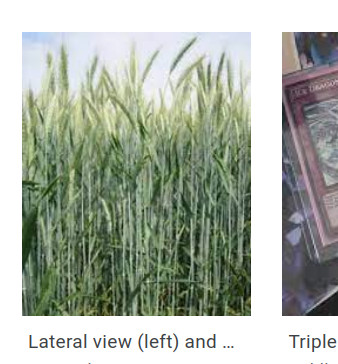cross-posted from: https://slrpnk.net/post/2137460
Another postcard from a solarpunk future. Leaning in on the postcard thing this time. This is kind of a mix of a traditional photobash and the style I’ve been using/making for a rural cyberpunk comic I’ve been working on. The difference is that this time I kept the source images underneath the line art, and used them for the color, whereas with the comic, I convert each element to lines individually, then combine and draw over them, and then color by hand underneath. As with the rest, it’s collaged together from images from all over the place, mostly textures.com, pexels, freepik, and of course, the lowes, amazon, and home depot websites, plus some screenshots of 3d models. I’ll disclose that I did use AI art for two elements of this one, I asked a friend’s midjourny bot to make the deer spraypaint mural, and the colorful mandala I used on the street car.
This was a scene I’d been picturing for awhile, I started building a more dynamic, two point perspective, but kept coming back to this flatter version whenever I thought about this building. I got talking with my SO about the streetcar in that scene, and realized that’s what I could put in the foreground here. That, and the simplicity of the design and the fact that I could bang it out in a couple days, convinced me to just go ahead and make this one too. It’s brighter, and different than most stuff I’ve made, but I’m pleased with it just the same.
I imagine this building is somewhat well known in this fictional place. I think it was probably converted into living space while the world was busy being a little more postapoclyptic than solarpunk, with new residents just scavenging materials from whatever they could. It’s since grown into a sort of community art project, proud of its history, squatters rights, and the reuse of its materials. The first floor is mixed residential/commercial space (you’d almost have to go out of your way to keep a former parking garage from being handicapped accessible, but I figure some first floor places would make things much easier). The roof is covered in a fruit tree orchard, I used apple, pear, and peach trees, all carefully found and cut out in detail before completely blasting them to get them to fit the style I was picturing. I figure these are planted in big planters, rather than directly on the surface of the roof. The building can support it, but standing water, especially in places that freeze, can be really bad for buildings, and tree roots can crack concrete just as well as ice.
As I said, I thought a lot about the design we’d use for the streetcar. My SO and I had some good conversations about aesthetics and what they implied because of genre conventions, down to real world infrastructure, maintenance, and the role of community in a project like this. We considered cyberpunk designs, with all kinds of planes and angles and sleek black coatings, to things that looked halfway like boats or other weird contraptions.
I was torn between wanting its purpose to be visually clear at a glance, and wanting to show something genuinely strange or futuristic.
I settled on a 1910s-ish streetcar for the base both because it’s visually clear, and because I think it might be a practical starting point for a society that’s trying to rebuild from scratch using entirely local manufacturing. The design is kinda crude but it’s proven - streetcars like this were ubiquitous in the US once upon a time. And they used 1910s-era motors, controls, metallurgy, and manufacturing. It feels like this would be a reasonable starting point, especially with a ready supply of scavenged components and high quality metals laying around above ground in the form of existing vehicles (even wrecks).
I like to imagine that this is a newer phase in this citys’ public transit infrastructure, that they’re starting to standardize their vehicles to simplify things. I like the idea that the first generation of these streetcars were genuinely a community project, that the city/public transit folks settled on some specifications and devoted their limited budget and manufacturing to producing standardized bases, (basically the bottom frame, wheels, motors, and pantograph rig) and that people built the carriages out of whatever they had access to. Each streetcar would be a unique, craft-built contraption, sort of ‘public transit by way of Weekend Wasteland.’ All kinds of crazy streetcars made from campers, boats, old school buses, whatever people had access to. City safety inspectors and a committee of local people with an emphasis on the disabled, would review each one and specify any necessary changes. This got them a fleet of ready streetcars quickly, allowing them to start providing services while more slowly manufacturing standardized ones to replace the most problematic of the home-built machines.
The slow standardization would be somewhat contentious within a community that took pride in building it’s own infrastructure, and in the art-like variety. They might chafe at standardization and formalization, like it’s a sign that society is stratifying again. Though the convenience of a more reliable transit network might help balance it out. As a nod to the artistic spirit and history of the fleet, the new vehicles are painted uniquely by members of the community.
Previous postcards:
https://imgur.com/gallery/BJHdVTP https://imgur.com/gallery/hefGfW6
If you’re seeing this message, that means JavaScript has been disabled on your browser, please enable JS to make Imgur work
I’ve tried posting the image as a response to this comment (I’m guessing you don’t want to turn off noscript or whichever adblocker you’re running) but it won’t upload, possibly because this thread is on lemmy.ml? The good news is I’ve also uploaded it to a few other places:
Hopefully one of those will work. If you know of a more fediverse-friendly image hosting solution I should be using, let me know!
Pixelfed?
Thanks, I’d missed that one somehow - just signed up! https://pixelfed.social/i/web/post/607237425340447357
It’s a neat concept but what we should be doing is obliterating the spaces made for cars and building spaces made for people, not “reclaiming” car space to fit people in it.
both?
while sustainable building techniques and materials are (re)discovered, tearing down serviceable shelter instead of repurposing seems like it’d be kind of a wasteful approach
I disagree, I think the techniques are not the issue, but the political-economic will to actually do it. It doesn’t matter if we discover a way to build a zero-footprint efficiently-dense accessible and affordable housing out of entirely reclaimed materials- zoning boards, HOAs, city officials, and all other sorts of shit-eating bureaucrats and busybodies are going to chain themselves to historic parking lots to prevent progress.
To that note, repurposing a parking garage into shelter makes it easy for them to evict the housed and turn it back into a parking garage as per its original design- even potentially arguing that its original design as parking makes it unsafe for human habitation (and they very well could be right- cars and car infrastructure can be very toxic).
Tearing down car infrastructure isn’t just symbolically obliterating car infrastructure, it has very real impacts in making it hard for the pendulum to swing back to building housing for cars and not people.
amazing concept, beautifully done 💖





